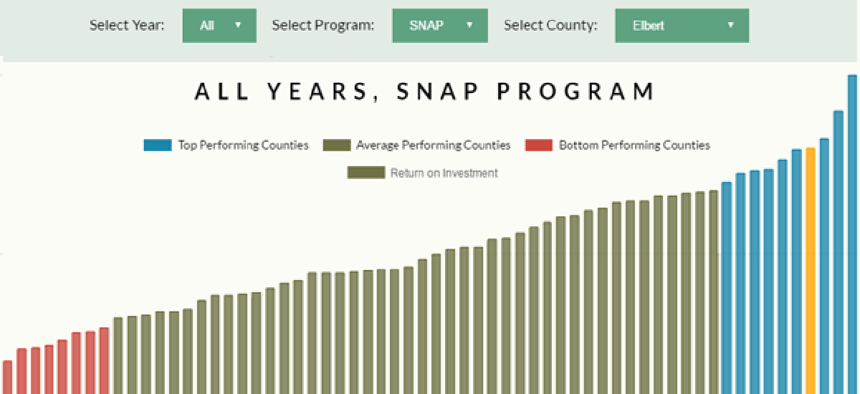Data maps gaps in Colorado’s human services programs


Connecting state and local government leaders
A group of nonprofits in Colorado transformed available government data into an interactive map to identify county-level access, spending and cost gaps.
A group of nonprofits in Colorado has transformed available government data into an interactive map that shows county-level gaps in human service programs.
The Human Services Gap Map aggregates state and federal agency data on the Colorado’s food, health care, childcare and financial assistance programs, then maps it by county. Led by the Colorado Center on Law and Policy, the project is a response to the state’s past inefficiencies in providing access to these programs, according to Public News Service.
The county rankings were generated by calculating the average number of people “eligible but not enrolled” in five programs: Colorado Child Care Assistance Program (CCCAP), Colorado Works, Medicaid, Supplemental Nutrition Assistance Program (SNAP) and Women, Infants and Children (WIC).
Fiscal, administrative and Census data were collected to estimate eligibility and show how effectively Colorado counties are delivering these programs. While the state and federal government fund the programs, Colorado’s counties are responsible for allocating and administering them.
By hovering over counties, users can compare enrollments, allocations and costs for the programs. The map’s interactive dashboards use the data to illustrate three major gaps:
Access between those eligible for programs and those who are receiving assistance. The size of a gap might indicate missed opportunities to meet residents' needs or more efficiently use available resources.
Spending between state allocations for CCCAP and Colorado Works and actual spending. Overspending may indicate that a county needs additional state funds to support its residents, while underspending could signal a decrease in need for basic cash assistance.
Costs between enrollment expenses for SNAP, WIC and Medicaid and return on investment. Variability in these figures could illustrate the county’s efficiency in enrollment or managing its human service resources.
According to the map, the large access gap in SNAP caused Colorado to miss out on more than $686 million in grocery sales in 2013, and gaps in Medicaid meant medical providers absorbed the costs of uninsured care.
The Gap Map site also provides current best practices to make these programs more accessible to those who need them as well as ideas for increasing their effectiveness.
The group hopes that making data and analysis available to county-level administrators, stakeholders and policymakers will increase accountability, transparency and incentives to improve performance and access to these programs.
The Colorado Center on Law and Policy partnered with Hunger Free Colorado, the Bell Policy Center, Covering Kids and Families and the Colorado Consumer Health Initiative.




